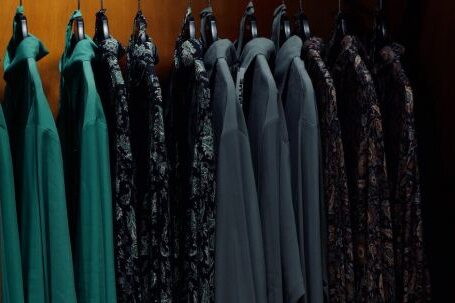In recent years, the fashion industry has come under scrutiny for its negative impact on the environment and society. From excessive waste to unethical labor practices, the fast-paced nature of the industry has contributed to a culture of consumption and disregard for sustainability. However, there is a growing movement towards sustainable fashion, where consumers and brands alike are making ethical choices to create a more conscious industry.
The Environmental Impact of Fashion
The fashion industry is one of the most polluting industries in the world. From the production of textiles to the disposal of garments, every step of the process has a significant environmental impact. The use of toxic chemicals in textile production, the massive amount of water required, and the disposal of non-biodegradable materials all contribute to the industry’s carbon footprint. To combat this, sustainable fashion focuses on reducing waste, using eco-friendly materials, and implementing more efficient production processes.
Ethical Labor Practices
Beyond the environmental impact, the fashion industry has also been criticized for its unethical labor practices. Sweatshops, child labor, and exploitation of workers are unfortunately prevalent in many fashion supply chains. Sustainable fashion aims to address these issues by promoting fair trade, ensuring safe working conditions, and paying workers a living wage. Brands that prioritize ethical labor practices are transparent about their supply chains and work towards improving the lives of the people involved in the production process.
The Rise of Slow Fashion
One of the key aspects of sustainable fashion is the move towards slow fashion. This concept encourages consumers to buy less and choose quality over quantity. Fast fashion, with its cheap and trendy garments, has fueled a culture of disposable clothing. However, slow fashion encourages consumers to invest in timeless pieces that are well-made and will last for years. By buying fewer items, consumers contribute to reducing waste and supporting brands that prioritize sustainability.
Choosing Sustainable Materials
Another important aspect of sustainable fashion is the use of eco-friendly materials. Traditional textiles like cotton, for example, require vast amounts of water and pesticides to grow. Sustainable alternatives, such as organic cotton or hemp, have a smaller environmental impact. Additionally, innovative materials like recycled polyester or Tencel, made from sustainably sourced wood pulp, are gaining popularity in the industry. By choosing garments made from these materials, consumers can reduce their ecological footprint.
The Role of Consumers
While brands play a crucial role in driving the shift towards sustainable fashion, consumers also have the power to make a difference. By making informed choices and supporting brands that prioritize sustainability, consumers can create demand for ethical and environmentally friendly fashion. Additionally, consumers can extend the lifecycle of their garments by repairing, upcycling, or donating them instead of throwing them away. Small changes in consumer behavior can have a significant impact on the industry as a whole.
The Future of Sustainable Fashion
As the fashion industry continues to evolve, sustainable fashion is becoming more mainstream. Many renowned brands are now incorporating sustainable practices into their business models. However, there is still a long way to go in creating a truly sustainable and ethical industry. Collaboration between brands, consumers, and policymakers is essential to drive systemic change and create a fashion industry that respects people and the planet.
In conclusion, sustainable fashion is about making ethical choices in a fast-paced industry. By addressing the environmental impact of fashion, promoting ethical labor practices, embracing slow fashion, choosing sustainable materials, and empowering consumers, the industry can move towards a more sustainable future. It is through collective action that we can create a fashion industry that not only looks good but also does good.





